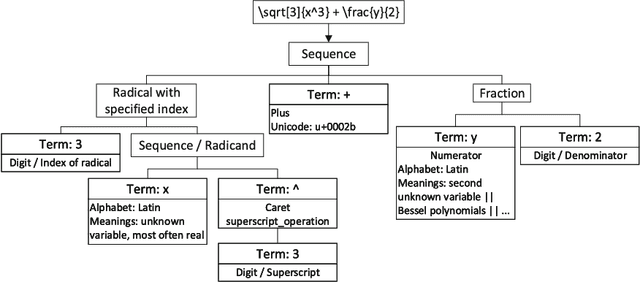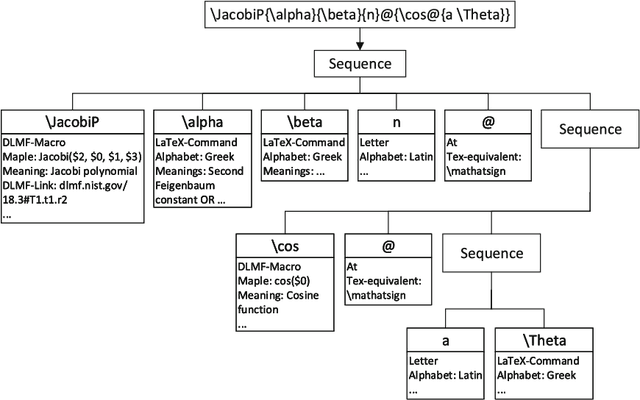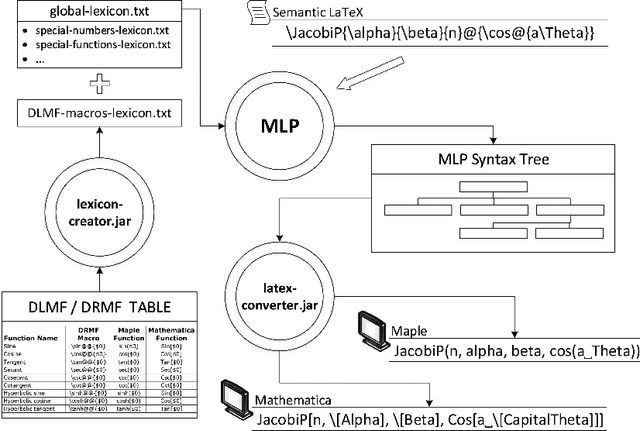Howard S. Cohl
Discovery and Recognition of Formula Concepts using Machine Learning
Mar 19, 2023Abstract:Citation-based Information Retrieval (IR) methods for scientific documents have proven effective for IR applications, such as Plagiarism Detection or Literature Recommender Systems in academic disciplines that use many references. In science, technology, engineering, and mathematics, researchers often employ mathematical concepts through formula notation to refer to prior knowledge. Our long-term goal is to generalize citation-based IR methods and apply this generalized method to both classical references and mathematical concepts. In this paper, we suggest how mathematical formulas could be cited and define a Formula Concept Retrieval task with two subtasks: Formula Concept Discovery (FCD) and Formula Concept Recognition (FCR). While FCD aims at the definition and exploration of a 'Formula Concept' that names bundled equivalent representations of a formula, FCR is designed to match a given formula to a prior assigned unique mathematical concept identifier. We present machine learning-based approaches to address the FCD and FCR tasks. We then evaluate these approaches on a standardized test collection (NTCIR arXiv dataset). Our FCD approach yields a precision of 68% for retrieving equivalent representations of frequent formulas and a recall of 72% for extracting the formula name from the surrounding text. FCD and FCR enable the citation of formulas within mathematical documents and facilitate semantic search and question answering as well as document similarity assessments for plagiarism detection or recommender systems.
Semantic Preserving Bijective Mappings of Mathematical Formulae between Document Preparation Systems and Computer Algebra Systems
Sep 17, 2021



Abstract:Document preparation systems like LaTeX offer the ability to render mathematical expressions as one would write these on paper. Using LaTeX, LaTeXML, and tools generated for use in the National Institute of Standards (NIST) Digital Library of Mathematical Functions, semantically enhanced mathematical LaTeX markup (semantic LaTeX) is achieved by using a semantic macro set. Computer algebra systems (CAS) such as Maple and Mathematica use alternative markup to represent mathematical expressions. By taking advantage of Youssef's Part-of-Math tagger and CAS internal representations, we develop algorithms to translate mathematical expressions represented in semantic LaTeX to corresponding CAS representations and vice versa. We have also developed tools for translating the entire Wolfram Encoding Continued Fraction Knowledge and University of Antwerp Continued Fractions for Special Functions datasets, for use in the NIST Digital Repository of Mathematical Formulae. The overall goal of these efforts is to provide semantically enriched standard conforming MathML representations to the public for formulae in digital mathematics libraries. These representations include presentation MathML, content MathML, generic LaTeX, semantic LaTeX, and now CAS representations as well.
 Add to Chrome
Add to Chrome Add to Firefox
Add to Firefox Add to Edge
Add to Edge